Dec. 16, 2024, 3 a.m.
Books for the holidays: beyond Brown Bear part 4
Children's book suggestions for deaf kids, from I Want My Hat Back to The Good for Nothing Button and beyond. Plus an ode to the speech balloon and a book on dinner table syndrome for parents.

Notes from the Deaf Baby Instruction Manual
The holidays are here, and although it’s a little late to send around a gift guide (Language Priority is already done for the year… but get a shirt for January!) I did want to give a bump to some children’s books, or really children’s book authors, who I love and whose work you can pick up from your local bookshop or library this week.
And as always, if you got this email from a friend and you like it, you can subscribe here, and follow me on BlueSky, Instagram or Facebook.
A child’s garden of shapes, intuition, and murder

Separately and together, Mac Barnett and Jon Klassen are picture-book rockstars. Their most famous collaboration is the Shape trilogy, but between them they have written and illustrated a score of amazing titles, including:
and many more.
Their collaborations are funny, creepy and involving. All of Klassen’s work, writing and illustrating, is creepy—he’s Edward Gorey’s obvious successor. Barnett, who’s typically the writer when they team up, runs a little sweeter. But I like these two best because in every story they make, there will always be something—maybe some unseen action that that happens between pages, or a callback to a previous detail, or another bit of business, that will cause you to stop and ponder. When reading to my kids, I say it’s the part of the book that makes you go, “Hmmm…”
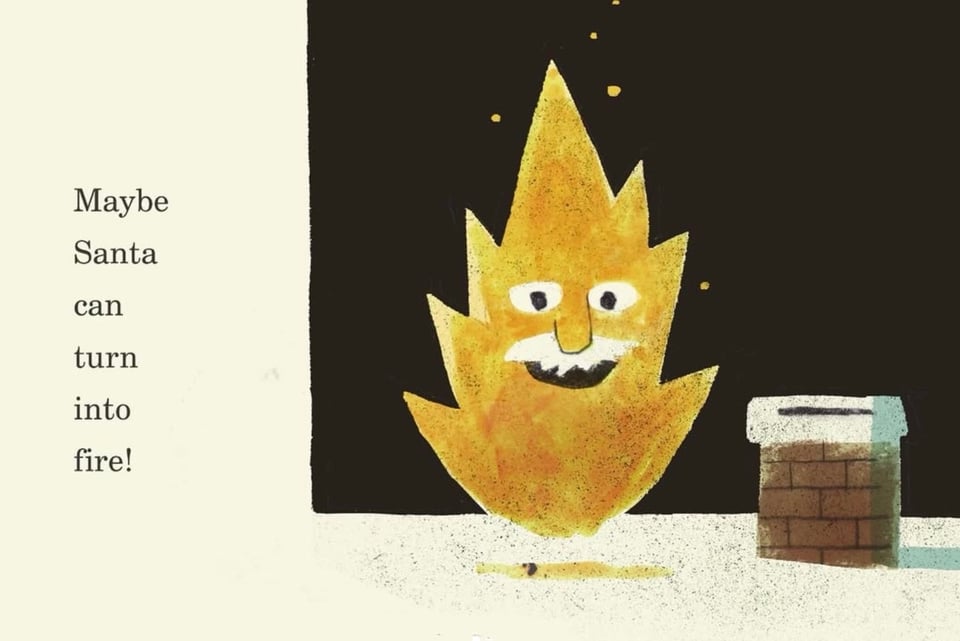
Chewing over these little bits—”What do you think happened to the rabbit?”—gives you access to a lot more information than is strictly shown on the page. In that moment, even their smallest stories get HUGE.
I can drag in literary theory to explain what they’re up to; Samuel Coleridge’s secondary imagination, Viktor Shklovsky’s defamiliarization, and Scott McCloud’s closure are all different ways of getting at it. But the basic idea is that Klassen and Barnett leave gaps in their stories, and trust their readers to fill them in.
Developing a gap-filling instinct is important for children. It lets them bring their own imaginations into these books, making them vivid way beyond their sand-colored illustrations. But it also helps kids project that imagination into their own daily experiences, and fill gaps out there. Part of it is cultivating the theory of mind, which I talked about with Not A Box, but it goes a step further, into kind of theory of world.
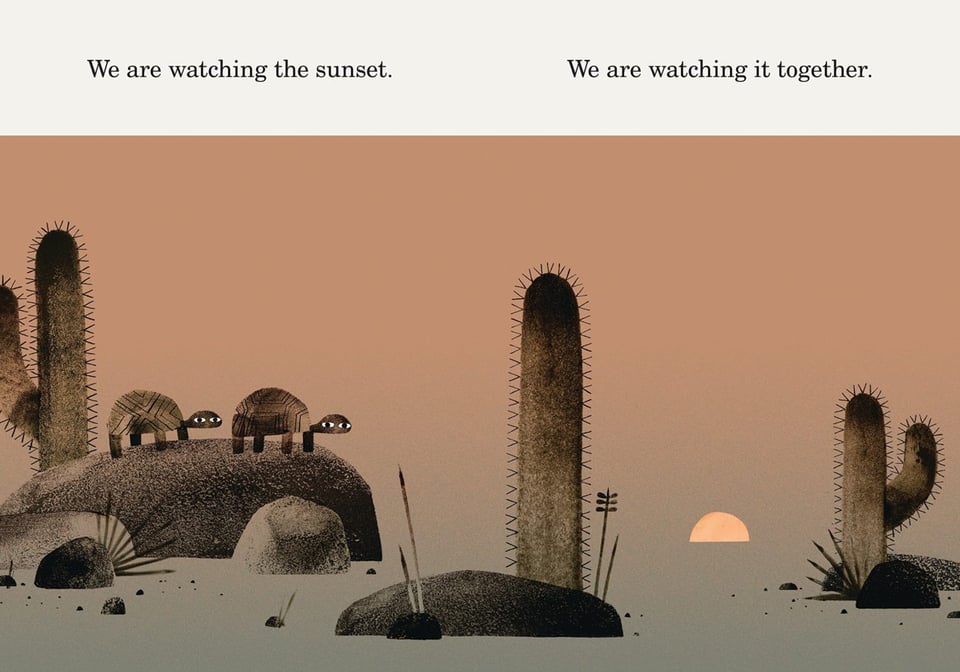
I think this is especially important for deaf kids. Oscar’s first Deaf caregiver once said she used all her five senses: sight, smell, touch, taste, and intuition. She didn’t exactly mean psychic powers, though. Because they don’t always have the same access to information in the hearing world, deaf folks often need to infer more from incomplete data. Why is this woman looking at me funny? Why did the teacher just leave the room? Is this a safe environment to be in? Learning to interpret the clues you have becomes a critical skill, and deaf kids need to practice it.
Klassen and Barnett’s work flexes this muscle. When you read their stories, you’re not only making guesses about a tortoise’s interior life, you’re also making guesses about how the world works. The rock is falling from the sky, and the armadillo has a bad feeling. Leo is not your imaginary friend, he is just your real friend. Sam and Dave’s dog seems to know something. Did Square really mean to trick Triangle? The ends of stories, or sometimes the middles, are left dangling for the reader to connect. 20 Questions and their new Santa book are about nothing but building new stories from clues provided. Hmmm…
Of course, depending on your kid’s age and experience, your may need to help them with that filling-in, but that’s the joy of reading to your child. Barnett and Klassen really do trust their readers, and that respect shines through and makes it easy to lead kids along with some gentle prompting.
On top of all that, these books are fun. The Hat stories use the format of movie thrillers and film noirs and makes them silly and appealing to kids (but still leaves in the murders!) The Shape stories take place in a bizarre dimension of elemental Platonic forms who also happen to be charmingly hapless comic characters. Sam and Dave Dig a Hole’s treasure hunt will have your kids twisting in frustration and delight. Extra Yarn is a sweet and lovely fable about generosity.
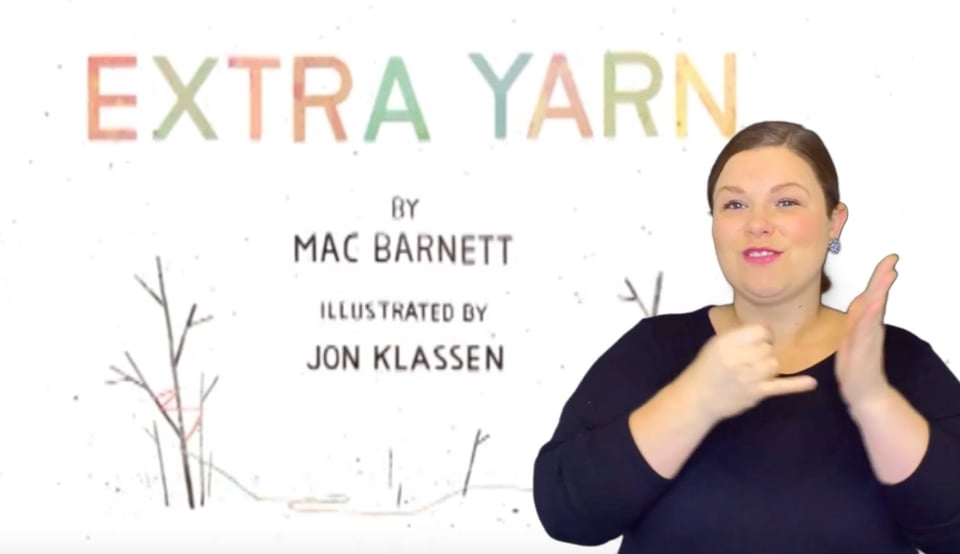
A couple words of warning: although I’ve read these books to my kids dozens of times, some of them are at the limits of my mediocre ASL. I can do a respectable job on the Shape trilogy and the Hat books, but I’m shaky on Rock from the Sky, and I don’t even contemplate Extra Yarn in ASL. And because some of their stories play with elements of sound and spoken dialog, some bits might not connect with your child—but I would look at all of them.
Hooray for speech balloons, an Elephant and Piggie story
Although Klassen in particular has made a couple of ultra weird books for young children, both Barnett and Klassen’s work skews a little older, and trickier to sign, so I wanted to recommend a couple other stories good for younger kids that you can tackle with beginning-to-mid-level ASL.
To make it extra easy, all these books have a secret weapon: they use comic-book style word bubbles for dialog.
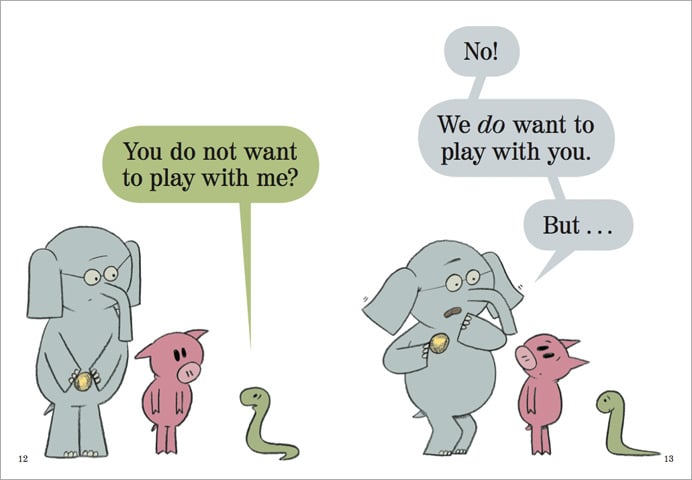
I can’t say enough good things about speech balloons when you’re signing books as a beginner. While it doesn’t fully absolve you from stuff like role shifting or using classifiers, they make it a lot easier by compartmentalizing your work. Instead of tackling paragraphs with multiple intertwined viewpoints, action and speech, you get discreet chunks of dialog with words clearly assigned to different characters, and action often carried by the illustrations instead of a narrator. This chops up the job into bite-sized pieces, and makes for much easier English-to-ASL interpretation.
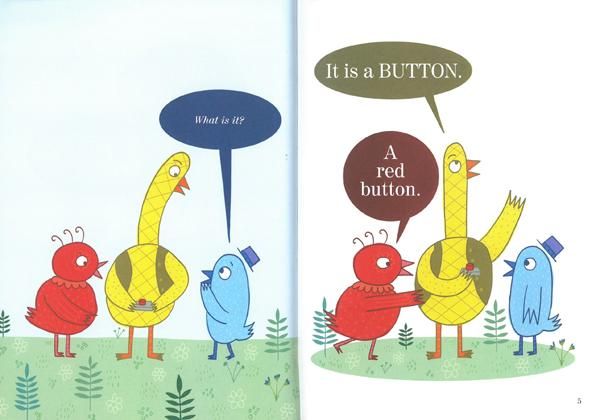
(Not coincidentally, speech balloons also helped Oscar when he was first starting to read, for the same reasons—it made for clearer, easier and more fun reading. This is why I think comics are an incredible tool for literacy.)
The Good for Nothing Button
Charise Mericle Harper has a great book about three friends goofing around and discovering that nothing is powerful stuff. The stakes are very low, the emotions are very big, and the characters are very silly and very fun to switch between. Good for kids age 4 and over (I think) and not impossible for ASL 2 and above.
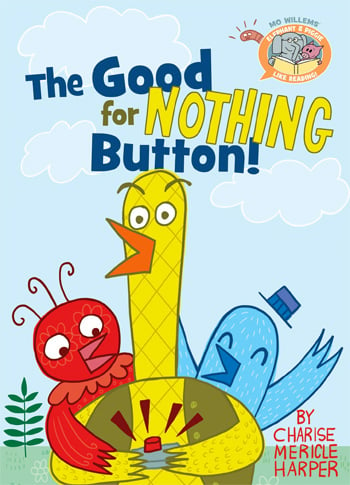
The Elephant and Piggie Books
Mo Willems’ series is about a reserved elephant with an enthusiastic pig for a friend; they have adventures. They are great, there are about two dozen of ‘em, and they otherwise need no introduction. Friendship, verging on romance, is at the core of the books—it’s very George & Martha—but the emotional tenor is pitched perfectly for preschoolers. Smart writing and great illustrations (and word balloons!) mean reading them is super-easy for you and for your child.
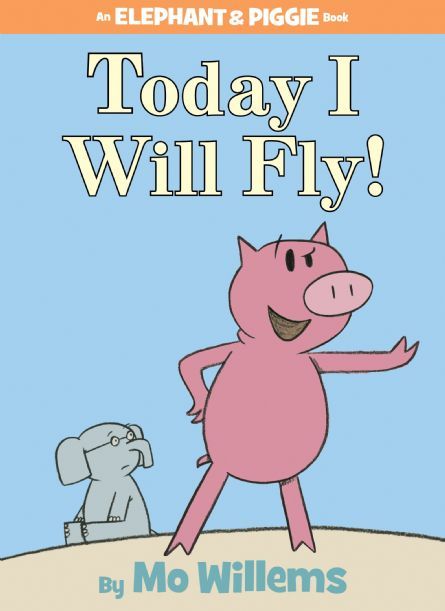
The See the Cat series
David LaRochelle’s series isn’t quite as straightforward with its dialog as the other two choices here—it has an “off screen” narrator and plays major metafictional games with them—but its simple style keeps the interpreting easy regardless.
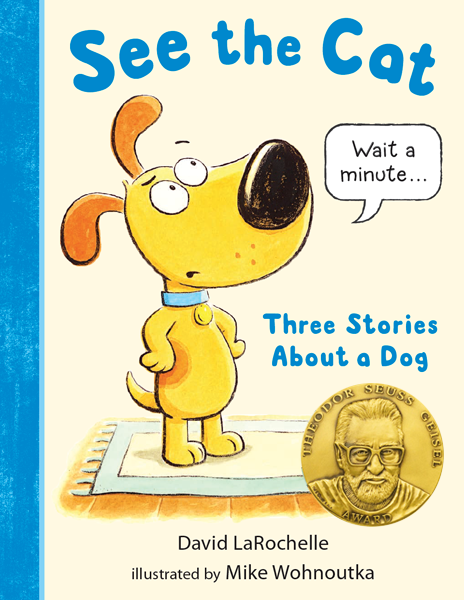
Because they use simple language but have complex ideas, these make a smooth transition between “toddler favorite” and “early reader,” too. Check ‘em out!
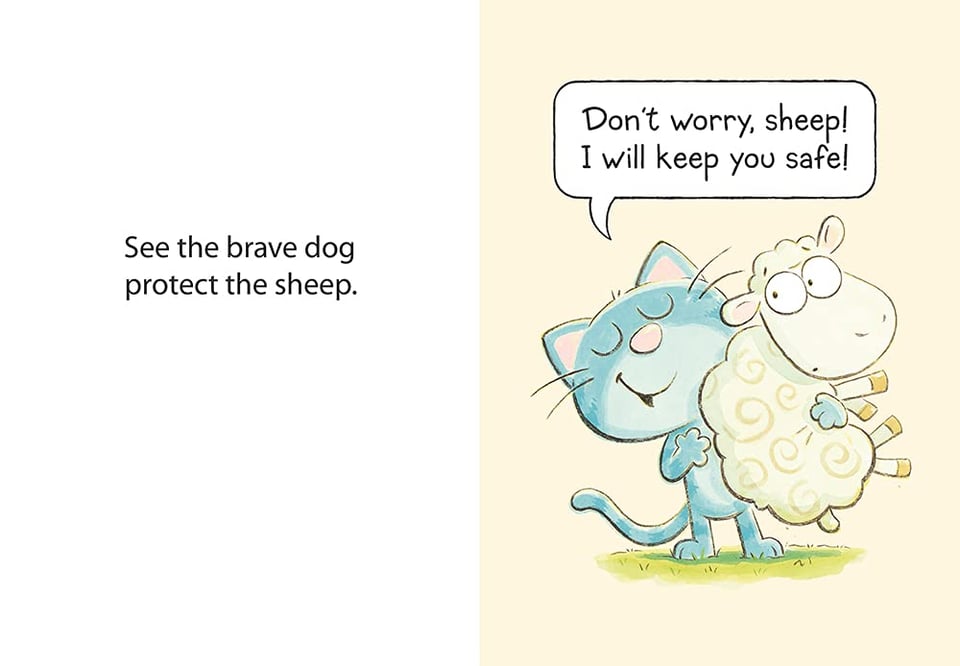
Thanks for reading, and happy holidays, however you celebrate. If you have tips or suggestions, please send them to me, and I’ll see you in the new year.
Postscript on Dinner Table Syndrome
One book that just came out for parents that I want to recommend is I’ll Tell You Later: Deaf Survivors of Dinner Table Syndrome. Deaf author Raymond Luczak collected stories, poems and reports from an array of Deaf writers about their experience being isolated among family and friends. This is, as they say, relevant to my interests. I plan to get a complete review into an upcoming newsletter, but who cares what I think—grab a copy and read it yourself.
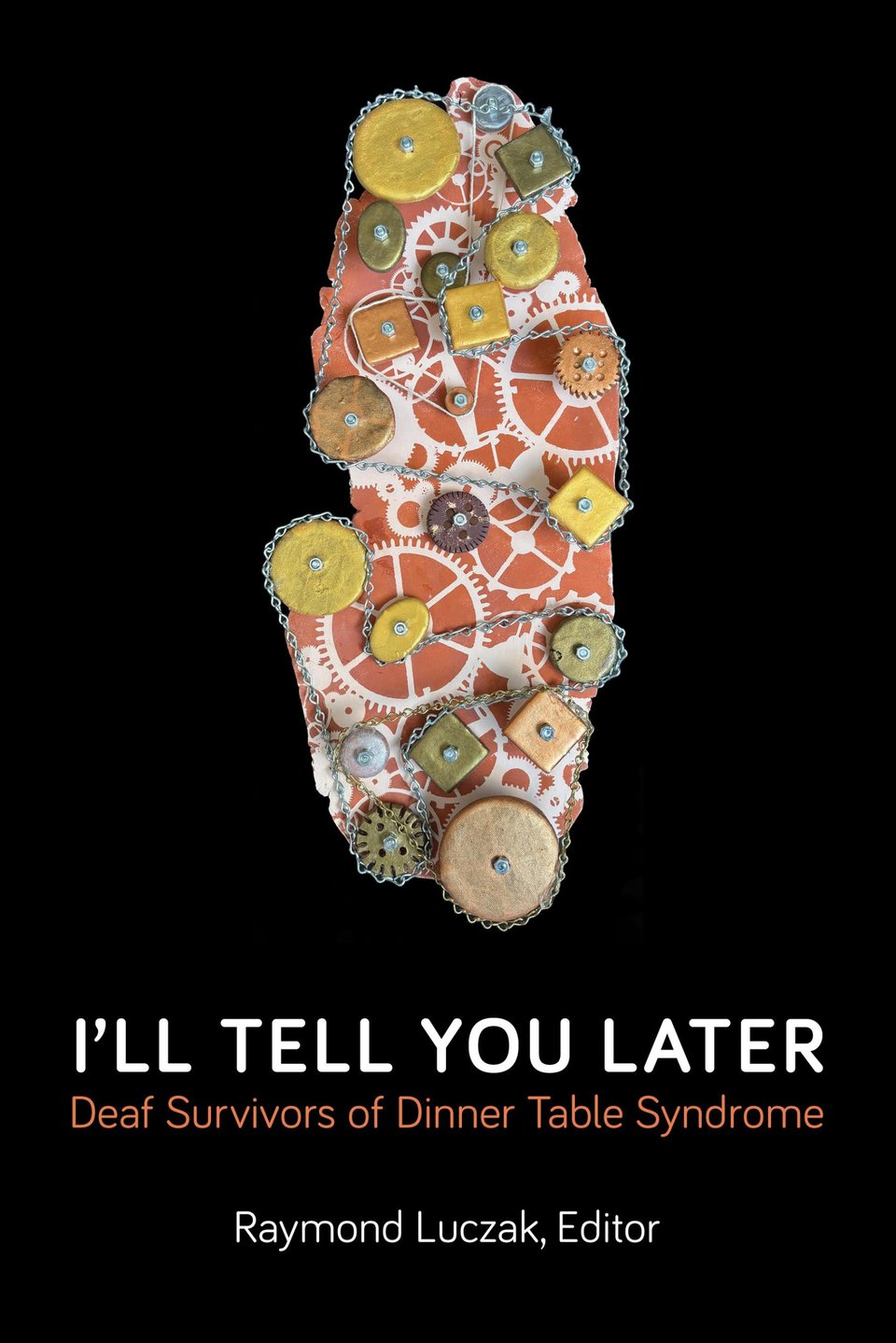
This is an informational newsletter on raising a deaf kid. All opinions in linked articles are the views and copyright of their respective authors, not this guy. All original content and opinions are those of their author, and are ©2025, William Fertman. Links are not endorsements.